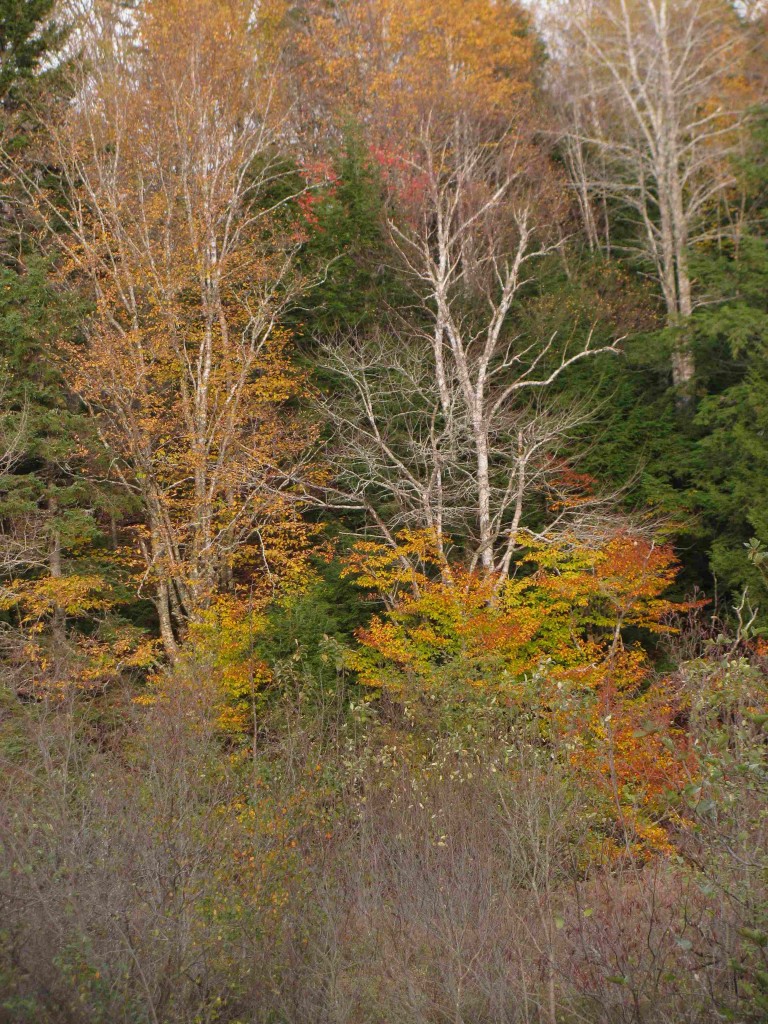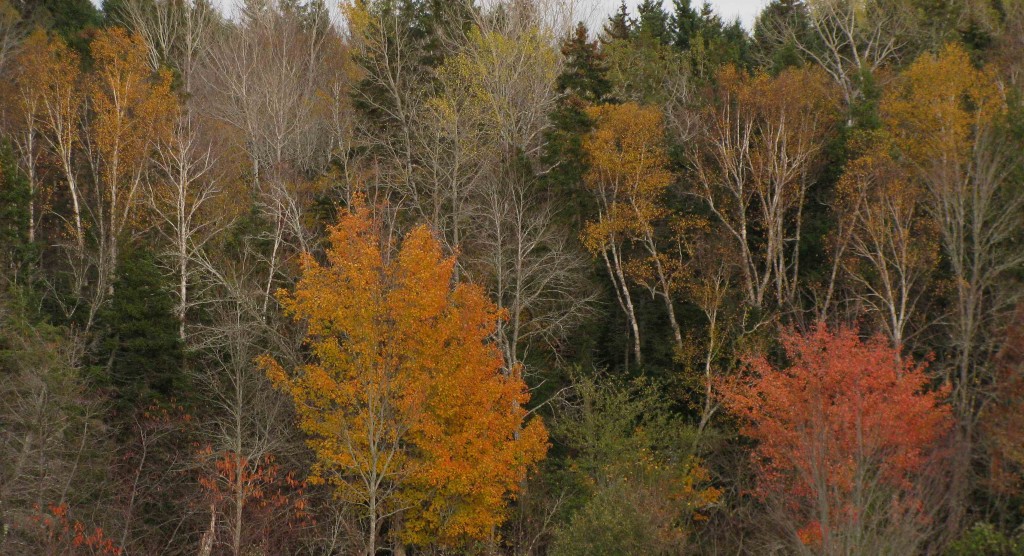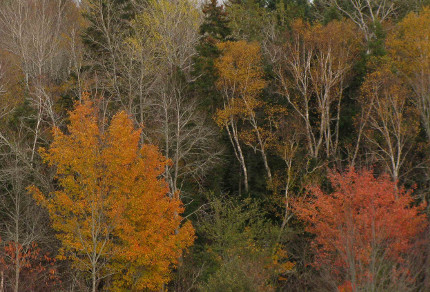
Autumn Trees, Nova Scotia (© Magi Nams)
Autumn in Nova Scotia is a wild rollercoaster of weather. Temperatures soar and plunge. Precipitation spans the gamut from misty drizzle to torrential downpours and includes sleet and ice pellets.
After yet another fierce autumn Maritime storm dumped torrential rain onto northern Nova Scotia for two days, glorious sunshine returned yesterday, so I took full advantage of it to snap photos of autumn colours, a couple of which are featured here.
However, the topic of today’s post arises from my monthly Bird Studies Canada e-newsletter, which I received today and which included two intriguing reports. The first was that the Cornell Lab of Ornithology has unearthed some video footage of a female imperial woodpecker. The imperial woodpecker, which I confess I’d never heard of before I read the report, is presumed extinct and was the largest woodpecker that ever lived. The video was filmed by an American dentist on vacation in the back country of Mexico in 1956 and can be viewed at http://www.birdlife.org/community/2011/10/imperial-woodpecker-1956-film/ The featured imperial woodpecker bears a strikingly large, curled crest and prominent markings. She’s well worth watching as she climbs the trunks of pine trees and flaps from one foraging tree to another.
The second report of interest mentioned that Bird Conservation Nepal has prepared a documentary which discusses the many benefits to people of Important Bird Areas – ecologically rich environments high in biodiversity. I watched the video and was struck by the majestic landscapes of Nepal, and by the fact that community forestry is very prominent in that country, with women being the prime movers in caring for the shrubs and trees in regenerating forests. (Apparently, men rarely go into the forests.) As the forests regain their foothold in Nepalese soil, local citizens benefit by having steady sources of water, cool breezes from the forest, supplies of fuel wood and of grass for cattle and compost-making. The forests also hold medicinal herbs and valuable mushrooms and provide habitat for a rich diversity of birds (including endangered vultures) and other wildlife species, which attract birders and other eco-tourists. To view the documentary, go to http://www.birdlife.org/community/2011/10/new-documentary-highlights-importance-of-ibas-for-people-in-nepal/ It offers an excellent example of the maxim ‘think globally, act locally.’

Late Autumn Colours, Nova Scotia (© Magi Nams)


